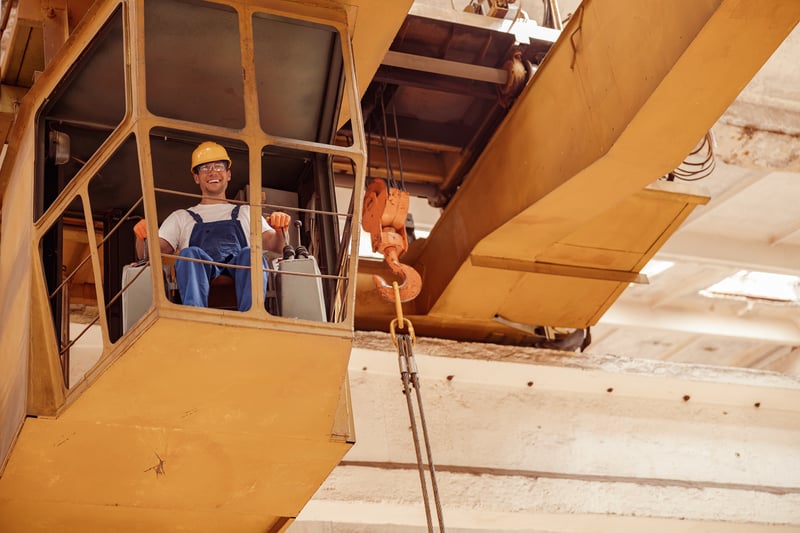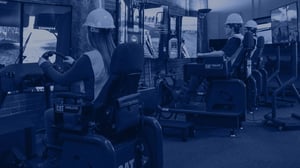The Problem with a Construction Labor Shortage
Simply put, the construction industry is experiencing a perfect storm of challenges. Traditional pathways into the sector have disappeared–primarily due to cultural factors driving the younger generation toward white-collar careers. Other factors include an aging workforce, a lack of skilled workers, and high housing interest rates. The results? Project delays, increased costs, and quality concerns.
Construction companies are now forced to keep up and prepare a new generation of workers in a fast and new way. However, traditional tactical training methods often require significant time and costly resources. This makes it challenging for construction companies to quickly bring new workers up to speed.
To solve this, businesses need a modern approach that attracts young talent and prepares them for the industry's demands as fast and efficiently as possible. This is where simulated training plays a vital role.
What Is Simulated Training?
Simulated training uses virtual reality, augmented reality, and even haptic technology–aka motion tech providing real sensations–to create a controlled environment where trainees can learn and practice skills. Sim training creates an atmosphere where users can really feel like they are in their real work scenarios with realistic replications of job processes.
It offers a safe, cost-effective, and flexible method for training new workers and enhancing the skills of existing employees. That means teams can train without the risks of operating heavy machinery, keep accident costs low, and practice no matter the weather.

How Simulated Construction Training Can Help
It’s simple. Construction companies need a new, modern training solution to keep up with the younger workforce–all while efficiently preparing them for their jobs. Thankfully, simulated training can do this and more.
Training New Workers
Construction simulation allows trainees to gain experience and highly relevant skills in a controlled environment. This approach reduces the time and costly resources needed for traditional on-site training with heavy machinery and accelerates the learning process. Since realistic simulation immerses the trainee in the virtual environment, they're more engaged with the material—resulting in higher training transfer and more efficient training. .
Improving Skill Levels
Simulation isn't just for newbies. It can also help existing workers refine their skills and adapt to new techniques or technologies. Not only does this enhance overall productivity, but it can also reduce employee turnover by showing team members the company is investing in their continued education in a modern way.
Reducing Accidents
Here’s the great news–simulated training significantly lowers the risk of accidents during training periods and accelerates learnings. Think about it like this. Someone who’s never driven a dozer machine has a high chance of making a mistake and causing damage. But with simulated training, trainees can learn to operate the same exact heavy equipment before hopping on the expensive machinery–essentially mastering their skills in advance. Simulated training in the construction industry gives employers the chance to put their trainees in extremely realistic, real-world situations without any risk or danger— confidently preparing them in advance for what the job will have in store for them.

Benefits of Selling Reliable Construction Simulation Training
Even more, having one main solution for simulated construction training offers several benefits to you and your clients’ businesses.
High ROI and Low Maintenance. Once set up, construction sim training provides a high return on investment because of its cost-effectiveness and low maintenance requirements. The right simulation company knows how to create training products that aren’t faulty or need frequent maintenance.
Easy Integration. Clients will love that simulation can be integrated into their existing training programs with minimal disruption, allowing them to use the technology quickly–meaning an easy selling point for you.
Realistic Experience. Reliable simulation products provide an authentic training experience that creates the feeling of operating real construction equipment. Your solution can be that missing key giving companies valuable hands-on experience through sight, sound, and motion haptics.
Government Support. The government is starting to recognize the need for skilled construction workers. And some are even beginning to support and finance construction training to help the labor shortage. This increases the growing market for construction simulated training solutions. For example, in 2023, Michigan created The Contractor Assistance Program funding $1.7 million to help assist in training and technical assistance to construction trades.
So, What’s Next For Construction Simulation?
Construction equipment simulators is the future of a well-employed and highly skilled construction workforce. It’s a practical solution to the construction worker shortage. It’s also a reliable product for simulation and training companies.
In a nutshell, the world of construction simulation can seem complex–but not for companies who excel in this sector. D-BOX partners with developers worldwide to create a wide range of software compatibility and direct integration into simulation engines. With muscle memory motion-cueing technology, customizable configurations for load capabilities and different engines, D-BOX is here to revolutionize your simulation.






